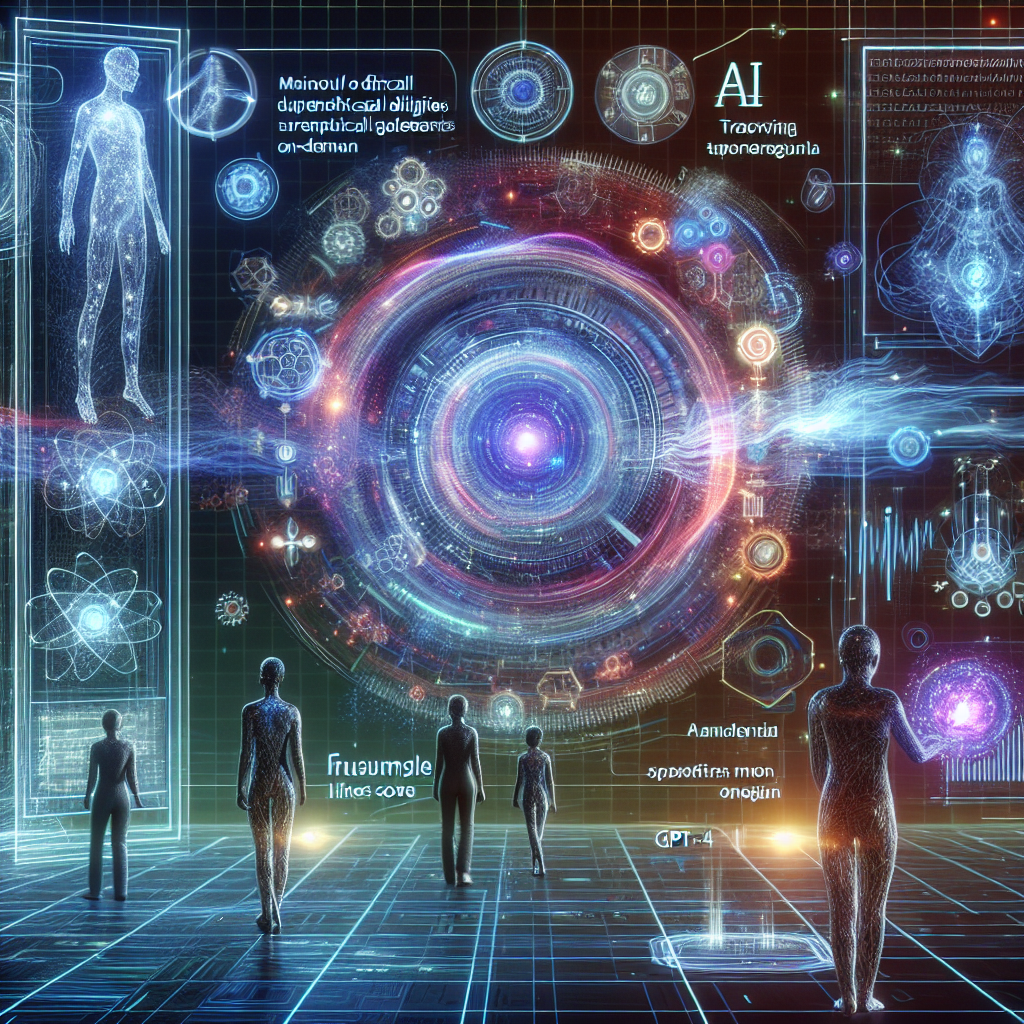Unleashing Superpowers On-Demand: The Rise of GPT-4 Turbo and the Future of AI
In an era where technological marvels emerge at a pace that almost outruns our capacity to adapt, one announcement has stirred the pot of innovation with a promise of accessibility, power, and the gift of 'superpowers' to the masses. At OpenAI's inaugural DevDay, a game-changing revelation named GPT-4 Turbo took center stage. This isn't just an update; it's a transformation, a leap into a future where AI is no longer just an assistant but a partner in creation, offering capabilities that were once in the realm of science fiction.
The Turbocharged Capability
Moving beyond the incremental, GPT-4 Turbo boasts an impressive context window of 128,000 tokens, a quadruple leap from its predecessor. This is not simply a numerical boast but a paradigm shift in how extensively AI can comprehend, retain, and interact with the information it is fed. The implications here are staggering - complex tasks requiring an extensive review of data, prolonged interactions, and deep dives into subjects can now be handled with an unprecedented level of sophistication.
The Dawn of JSON Mode
In a nod to developers, JSON mode was launched, showcasing a commitment to precision and utility. JSON mode is not just a feature; it's a bridge between human intention and machine execution, ensuring that AI responses align perfectly with structured data expectations. This level of reliability opens doors to intricate applications across various industries, where accuracy is not just desired but demanded.
Knowledge Retrieval Enhancement
GPT-4 Turbo doesn't just know; it learns and retrieves, drawing from external documents and databases to enrich its interactions. It's akin to giving the AI a library card to the world's information, allowing it to supplement its April 2023 knowledge cut-off with the most pertinent data available. This move toward retrieval integration is a powerful stride toward real-time intelligence, crafting a tool that's as informed as it is intelligent.
Enter the Dragon: Custom Models
Custom Models stand as testament to OpenAI's collaborative spirit. Here, researchers and companies unite to forge models that aren't just functional but fitted like a digital glove to the unique contours of a business's requirements. The implications for industry-specific tailoring are tremendous, suggesting a future of highly specialized AIs that understand the nuances of their operational domains as intimately as a veteran employee might.
An API Ecosystem Evolves
For the developers entrenched in the trenches of token limitations, the announcement of higher rate limits was a clarion call to action. The liberation of tokens per minute for established GPT-4 customers isn't just a numeric boost; it's a firm statement of support for those who are building tomorrow on the back of OpenAI's tools. With rate limits and quotas becoming a negotiable discussion, the ecosystem is set to become as dynamic as the marketplaces it serves.
Cost-Effectiveness: The Competitive Edge
With its promise of slashed costs—threefold for prompt tokens and twofold for completion tokens—GPT-4 Turbo isn't just playing the game; it's changing the stakes. Affordability intersects with functionality, making AI an attainable resource for a broader audience. This price reduction is a catalyst for democratization, allowing small-scale innovators to rub digital shoulders with technological giants.
GPTs: A Tailored Experience
GPTs represent a shift from one-size-fits-all to bespoke digital couture. The fusion of expanded knowledge, instruction following, and actionable outputs provides users with a curated AI experience like never before. This leap forward is significant: it means that regardless of context—be it business, creative, or personal—there's a GPT that's specifically tuned to excel in that environment.
Programming Made Conversational
The barrier to entry for AI programming has been dismantled with the announcement that one can now program GPT by simply having a conversation. This is more than user-friendly; it's an invitation to those previously intimidated by the complex syntax of code. By turning programming into a dialogue, OpenAI is essentially handing over the keys of AI creativity to a much wider audience.
The GPT Store and Beyond
Looking to the horizon, the upcoming GPT store is a promise of a marketplace where AI models can be traded, experimented with, and implemented on demand. This is not just a platform; it's a potential hotbed for innovation, a digital agora where the currency is creativity, and the commodity is capability.
Superpowers On-Demand
"We will all have superpowers on demand," they claimed. This is no empty promise; it's a vision supported by tangible advancements. The integration of 'on-demand superpowers' into everyday life signals a future where human potential is no longer stifled by limitations of knowledge, skill, or time. It's a future where the power of AI serves as an amplifier for human ambitions.
In Conclusion
As the dust settles on DevDay, it's clear that what was launched is merely the first stone in a rapidly expanding pond. With intelligence becoming an ubiquitous facet of our digital landscape, the potential for transformation is boundless. OpenAI's latest offerings aren't just tools; they're the building blocks for a new order of creativity, productivity, and innovation.
For those keen to dive deeper into the sea of AI development, places like OpenAI's own documentation offer a treasure trove of details and resources, while platforms such as Chatbot's Life provide insights into the practical implementation of these advanced models. It's the dawn of an era where individuals and organizations alike will architect a future that today, we can only begin to imagine.
Related News
- Unleashing GPT-4 Turbo: A Milestone in AI Evolution
- Unwrapping the Latest Innovations from OpenAI's Genius Box
- Navigating the Next Horizon: OpenAI's GPTs and the Agents of Change
- Unpacking the Buzz Around GPT-4.5 and the Expanding Horizon of AI
- A Comprehensive Review of GPT-4's Revolutionary Features
